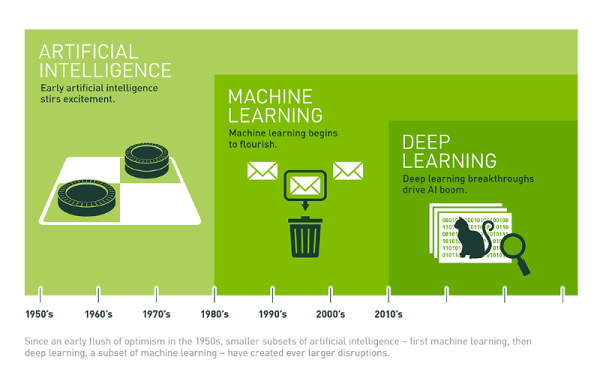TensorFlow
TensorFlow is an open-source library that was developed by the Google Brain team, and it was released in November 2015. Before working with TensorFlow, we need to understand the following basic concepts:
- Graph: Layout of the learning process. It does not include data.
- Data: Examples that are used to train. It has two kinds, which are inputs and targets.
- Session: Where we feed the graph with data or Session = Graph + Data. We can do this by using placeholders — gates to introduce examples.
We can install Anaconda to use TensorFlow.


